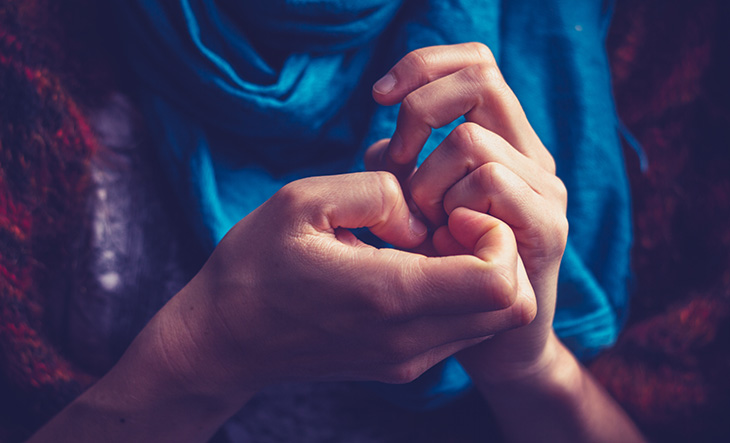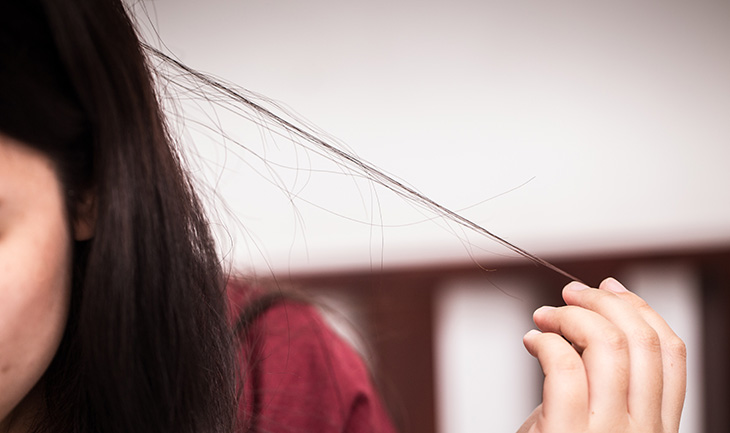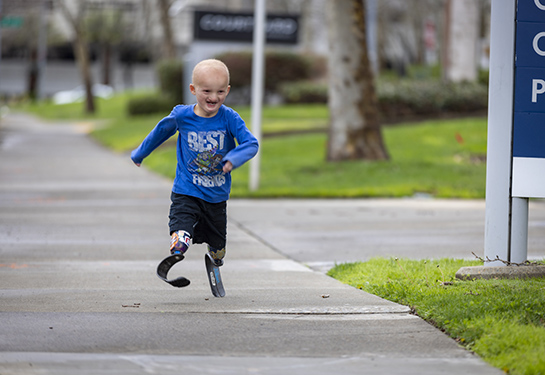Hair pulling and skin picking: How to help your child stop repetitive behaviors
UC Davis MIND Institute expert offers treatment tips for people of all ages
It’s common for kids and adults to pick at their skin or play with their hair, but in some cases, it can become a concerning habit, causing distress or infection.
As many as 1 in 20 people pick at their skin enough to be diagnosed with excoriation disorder, according to the International OCD Foundation. And about 1 in 100 people shows signs of hair pulling, also called trichotillomania, according to the American Academy of Child and Adolescent Psychiatry.
Luckily, there are treatments to help kids — and adults — reduce these habits, known as body-focused repetitive behaviors.
The UC Davis MIND Institute’s Breanna Winder-Patel is a licensed clinical psychologist. In this Q&A, she shares strategies and guidance for people who are concerned about hair pulling or skin picking.

What is skin picking?
Skin picking can include any area of the body, and it often results in some sort of tissue damage. It usually occurs on people’s hands, around their cuticles and their fingers. Sometimes teenagers might notice something on their face that they don’t like and pick at that.
When should you be concerned about skin picking?
Some people pick so much that it causes an infection. I have worked with a patient who ended up getting a really serious infection and the picking was almost down the bone. If the picking seems like it is causing tissue damage, or the child is saying it hurts, we want to include the primary care doctor or pediatrician.
What is hair pulling and when is it a concern?
This is an individual pulling hair from any part of their body. The most common places are their head or their eyelashes. Parents should seek treatment when they see large bald spots on the child’s head or if all of the eyelashes are missing. Some people feel a lot of distress with the hair loss.

Do people always know that they’re pulling their hair out?
Hair pulling can be automatic or focused. Automatic pulling would be someone who’s watching TV and they don’t realize they’re doing it. Focused would be those individuals who are really looking for one particular hair — maybe one that feels more coarse or curly. I once saw a patient who had bald spots, and nobody knew why. Then her mom moved her bed and found huge amounts of hair on the floor behind her bed. She was doing automatic pulling in that state between being awake and asleep and she wasn’t aware she was doing it.
Why do people pull their hair or pick their skin?
Sometimes it is related to anxiety but not always. It can be more common in kids with attention-deficit/hyperactivity disorder (ADHD). Sometimes it’s a way of soothing. Some people say that they feel a tingle where the hair is that they want to pull out. Or they notice dead skin along their cuticle, and they really feel like they have to get rid of it.
What is a trichobezoar?
A trichobezoar is undigested hair in the digestive tract. Some people pull and eat their hair, and you can’t digest hair, so it gets stuck. It can be a serious medical problem. If you notice an individual pulling their hair and eating it, I suggest a referral to a medical doctor.
I once saw a patient who had bald spots, and nobody knew why. Then her mom moved her bed and found huge amounts of hair on the floor behind her bed. She was doing automatic pulling in that state between being awake and asleep and she wasn’t aware she was doing it.” —Breanna Winder-Patel, licensed psychologist
When should a parent seek treatment for a child’s hair pulling or skin picking?
A lot of kids fiddle with their hair or twist it or pick at their hands and there’s no clear damage. That’s not usually a cause for concern.
Young children could have big patches of hair missing and not really feel like that’s a problem. But parents usually feel distress about it. Parents have great instincts about their children, and if they are concerned, they should definitely bring it up with their medical professionals.
How are skin picking and hair pulling treated?
We start by finding out if there are high-risk times, because that’s going to really help us treat it. Cognitive behavioral therapy, or CBT, helps people understand the thoughts they’re having and the behaviors that are maintaining the symptoms. One type of CBT we use is habit reversal training.
We often look for what we call competing responses. What else could the child or individual do with their hands during these high-risk times that would compete with their ability to pull their hair or pick their skin?
What are some examples of competing response strategies?
With younger children, if a high-risk time for pulling or picking is watching TV, we would have a basket of fidget toys by the couch. We’d encourage the child to pick up a fidget before they start watching TV. Also, some people like the feeling of pulling or picking, so we try to replicate that with something that won’t hurt them. An example is putting a hair band on the wrist to pick at instead.

What other strategies are there?
Another strategy we use is stimulus control. This means we’re doing something that blocks the behavior. We’ll have kids wear a hat during high-risk times. That way when they put their hand up to pull, it gets blocked. I once worked with a girl who had perfect vision but had glasses with no prescription because it blocked her ability to pick her eyelashes. Putting band aids on their thumbs and fingers is another option.
How can parents support kids through this process?
One goal is to really reinforce the strategies. If you catch your child picking up a fidget before watching TV, praise them or give them a reward for that. We want to stay neutral to the behavior and try not to put a negative focus on it.
What resources do you recommend for parents?
The TLC Foundation website has a lot of information about body-focused repetitive behaviors, including case examples and a section where you can search for therapists in your area.
The UC Davis MIND Institute in Sacramento, Calif. was founded in 1998 as a unique interdisciplinary research center where families, community leaders, researchers, clinicians and volunteers work together toward a common goal: researching causes, treatments and potential prevention of challenges associated with neurodevelopmental disabilities. The institute has major research efforts in autism, fragile X syndrome, chromosome 22q11.2 deletion syndrome, attention-deficit/hyperactivity disorder (ADHD) and Down syndrome. More information about the institute and its Distinguished Lecturer Series, including previous presentations in this series, is available on the Web at mindinstitute.ucdavis.edu.




